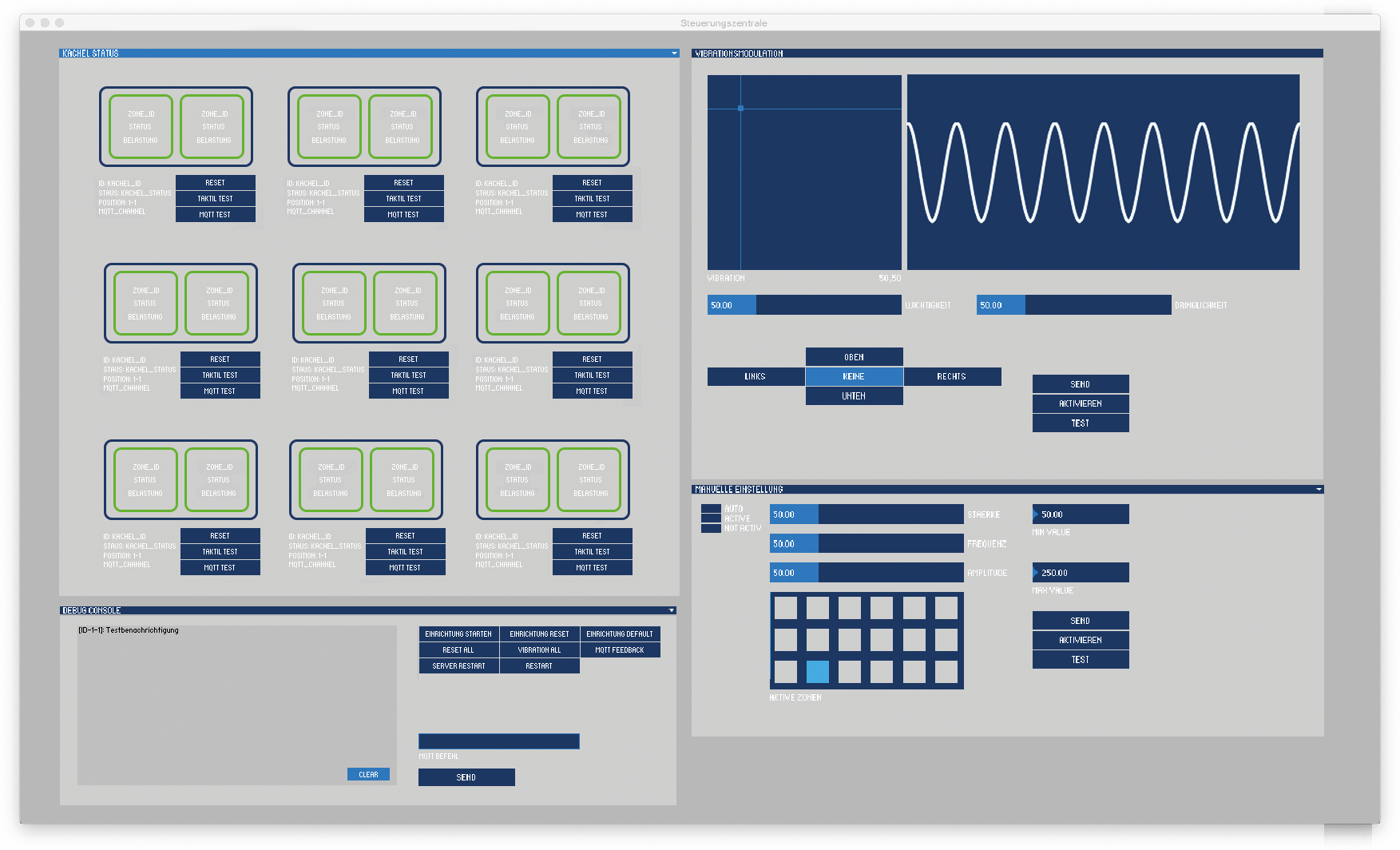Bachelor Thesis
Tactile System
Year
2020
Technologies
Arduino
Microcontroller
Processing
Goal
Conception and design of an adaptive system for the communication of context-sensitive information in public space
Cities must develop an expanded understanding of their tasks in order to meet the new requirements of urbanization. However, sustainable systems for information dissemination to citizens in public space are missing. The goal of this work is the conception and design of an adaptive system that conveys context-sensitive information in public space.
Abstract
The result of the conceptual development is a modular floor panel that generates tactile stimuli through vibration in individual zones. The new system responds adaptively to the context, providing information as needed and addressing only specific users. The stimuli are dynamic and adapt to the information being conveyed. To do this, properties such as urgency, importance and direction are automatically transferred into features of the vibration.
Urban living spaces are becoming increasingly digitized.
Cities can increasingly perceive their surroundings and collect data. However, the available information systems in the public space have not been dynamic for years and are only slightly digitized.
This thesis deals with the question of how cities can communicate with people in public space. For this purpose, an information system is designed that conveys information adaptively and context-sensitively.
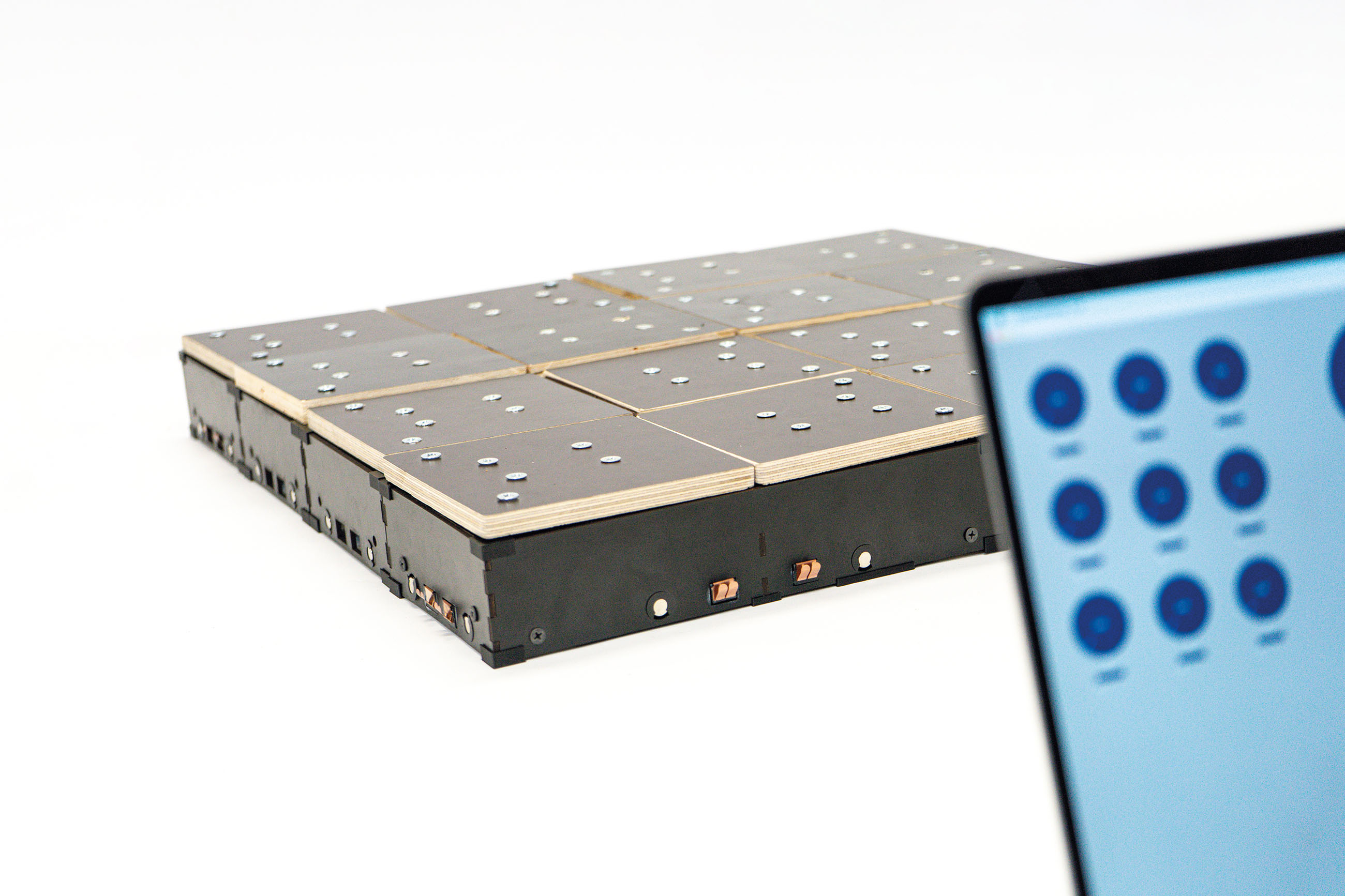

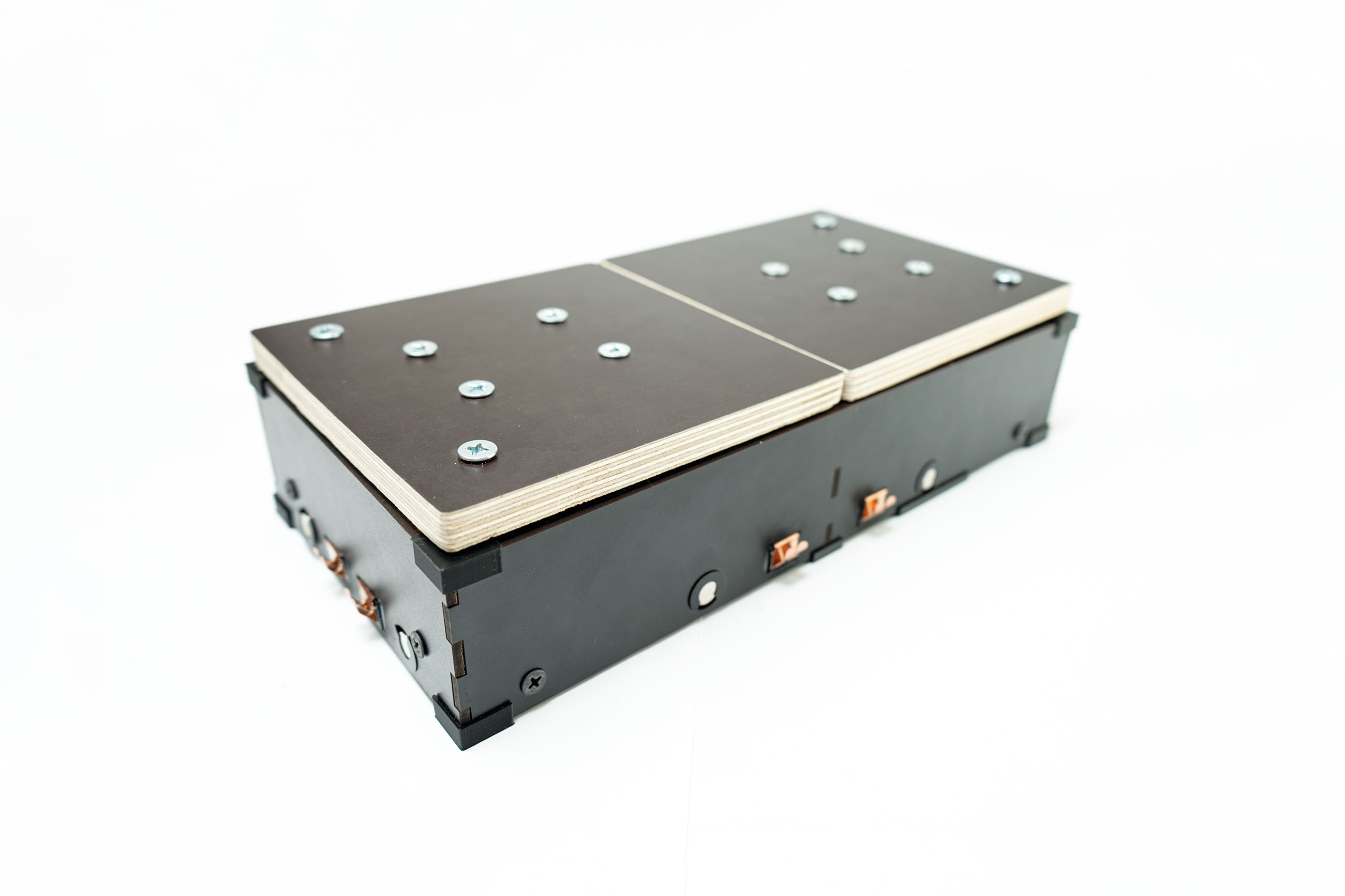
Tactile stimuli as informationsystem
Tactile stimuli as The use of tactile stimuli is widespread in various applications. Probably the best known is the vibration alarm in cell phones. A special information system in public space is the guidance system for the blind. It is a floor guidance system that enables people with visual impairment to move easily and safely in everyday life. It is based on floor indicators whose conspicuous surface structure is identified as an information-carrying element
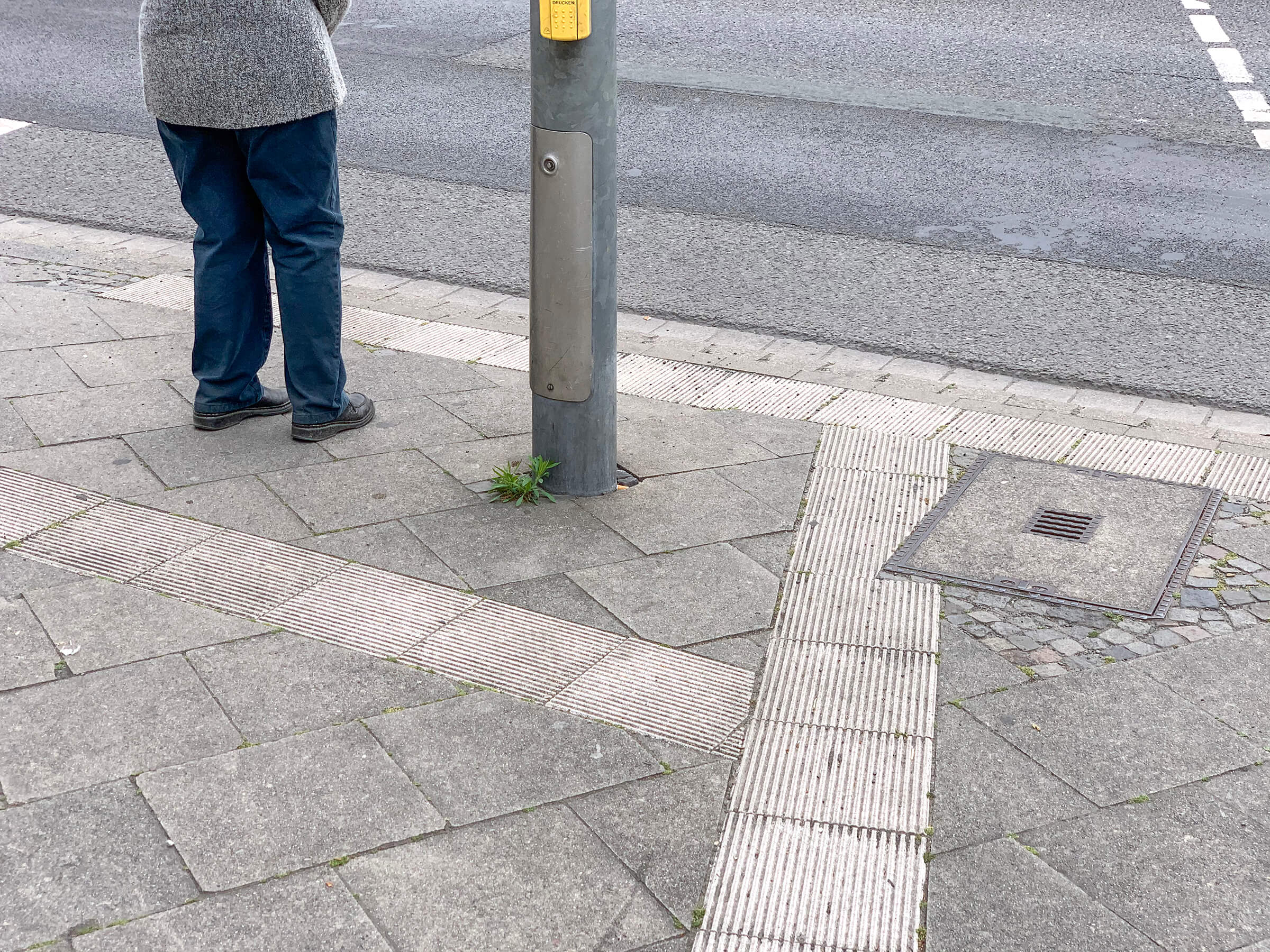

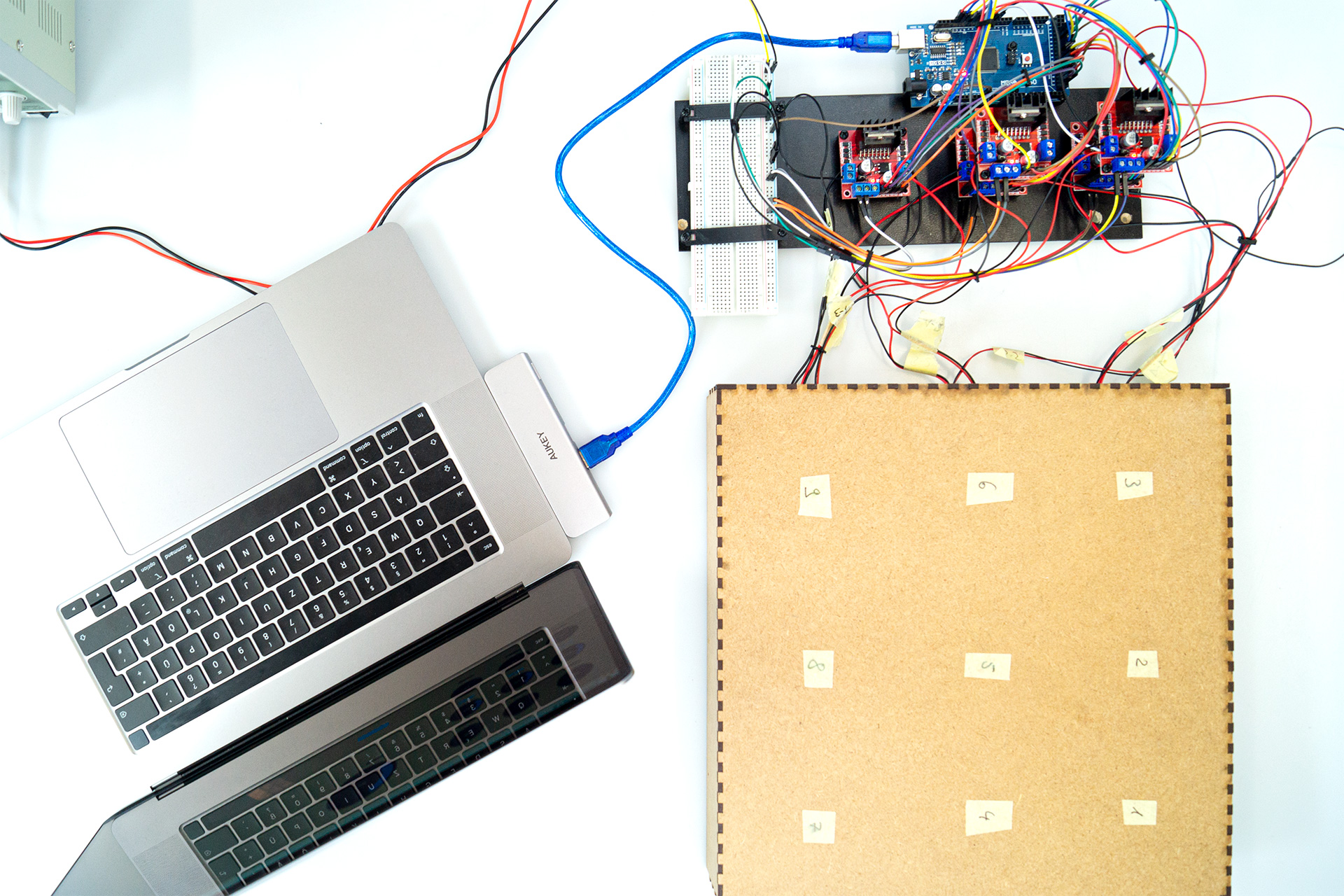
Exploration
To develop the concept, it is important to take a closer look at the perception of vibrations via the foot. Three explorations are designed and carried out. For this purpose, test persons are exposed to vibrations in different ways. From their experiences and the measured data, conclusions can be drawn for further conceptual design.
The technical basis of the tests is a floor plate measuring 30 x 30 centimeters. It is divided into nine sections of equal size. Each can be made to vibrate independently of the others by its own vibration motor. The vibration characteristics can be modulated. The individual zones can be precisely controlled in terms of strength and duration with the help of a graphic interface.
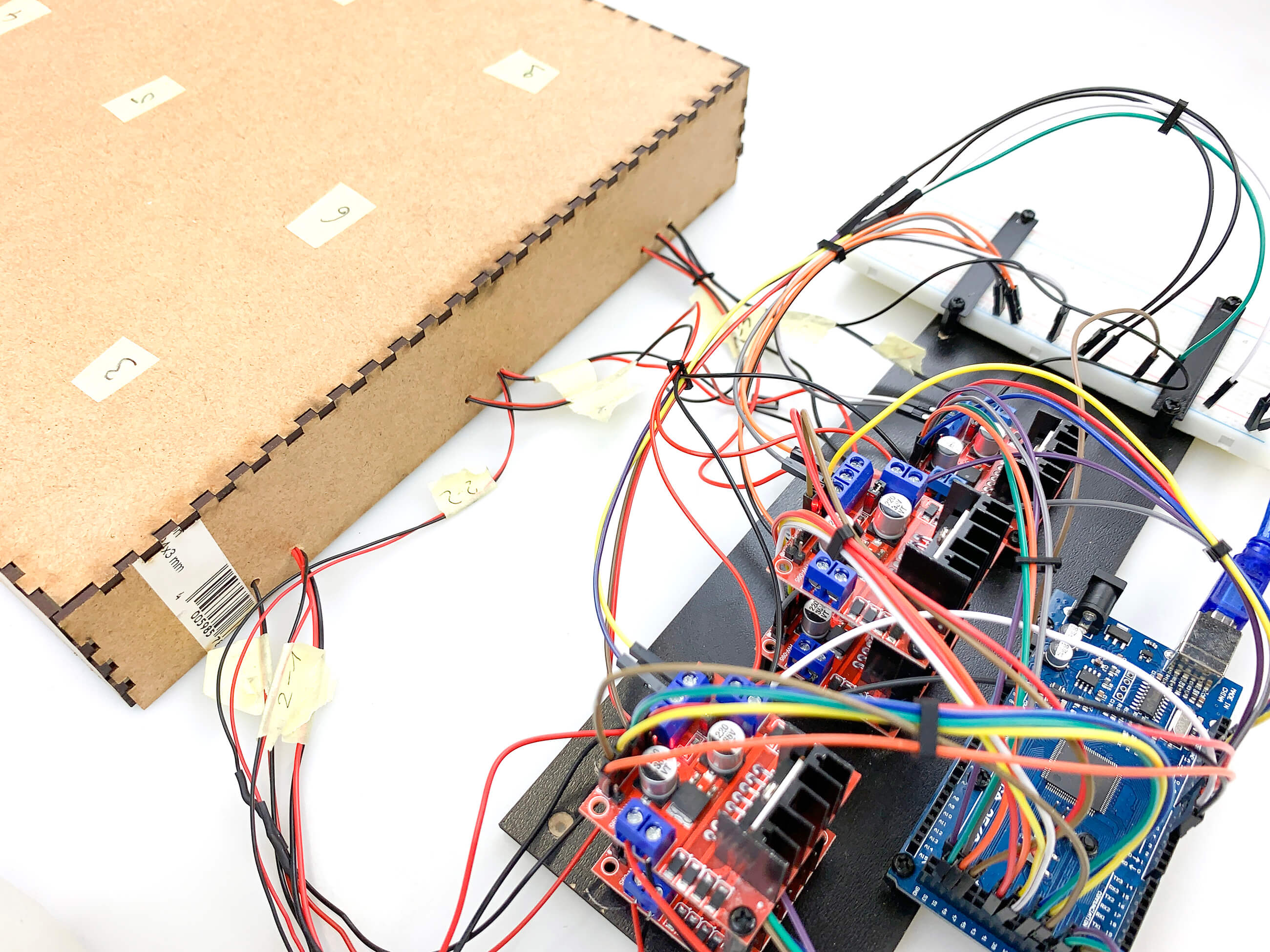
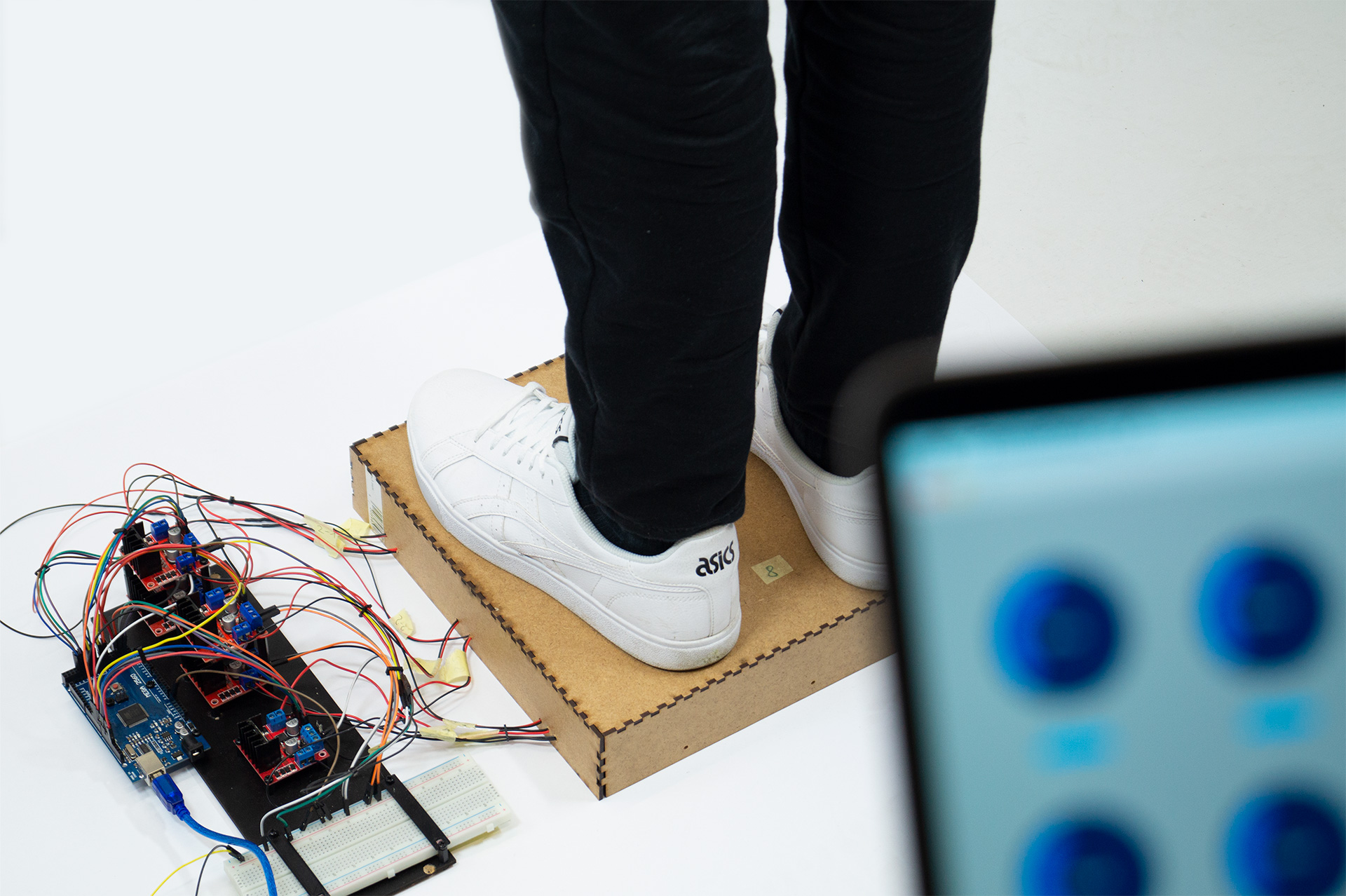

Solution
From the findings of the explorations it becomes clear that several vibration features can be identified, which the users clearly assign and distinguish sufficiently well. Individual characteristics are associated with subjective impressions. Through this association, it is possible to transfer features of an information into the characteristics of a vibration. The system procedurally modulates specific vibrations from the given information data. The individual characteristics automatically mix to form a tactile impression. The following attributes of an information are interpreted and considered: Importance, urgency, direction, character, selection, variance, weight sensitivity.

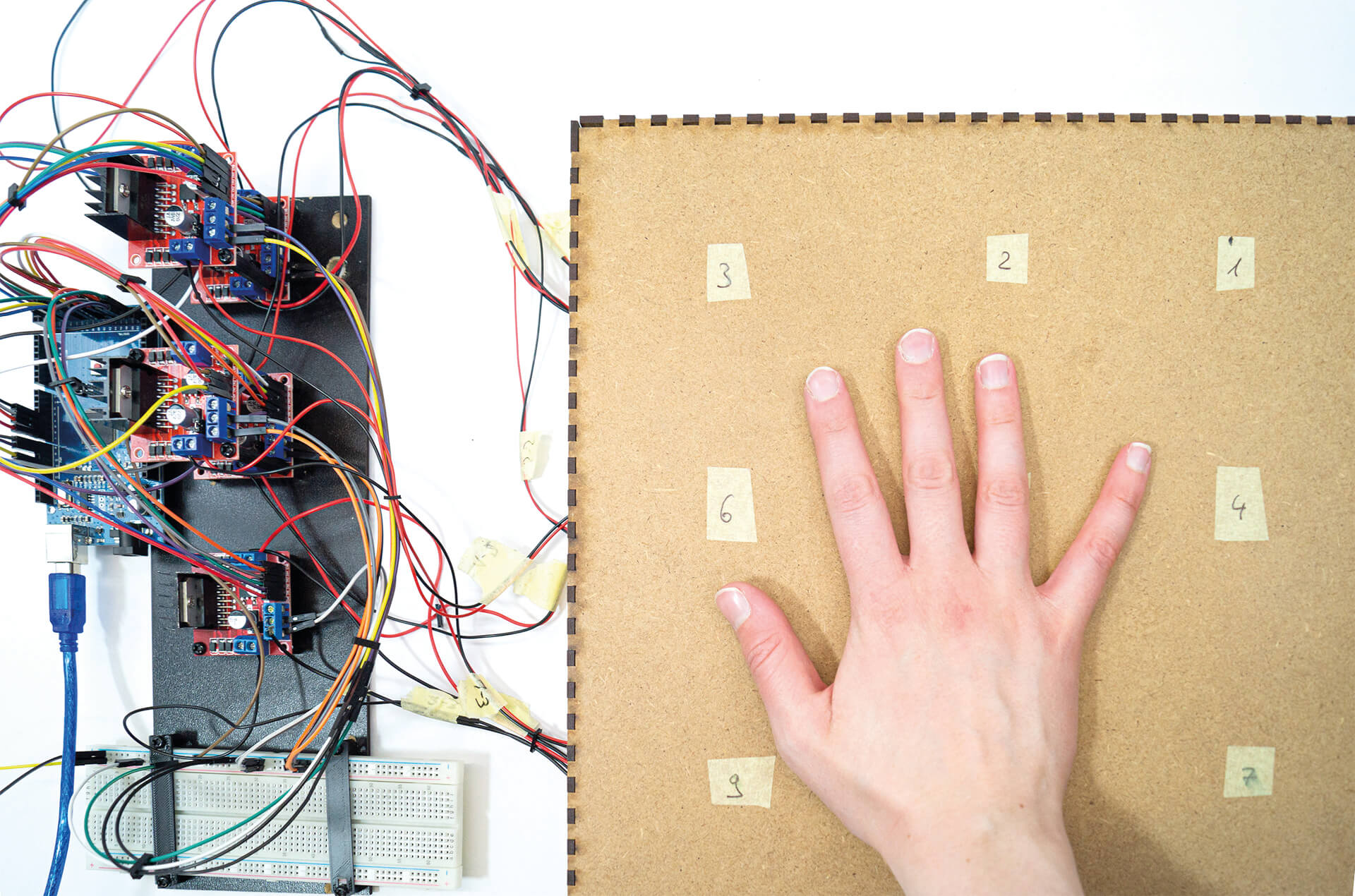
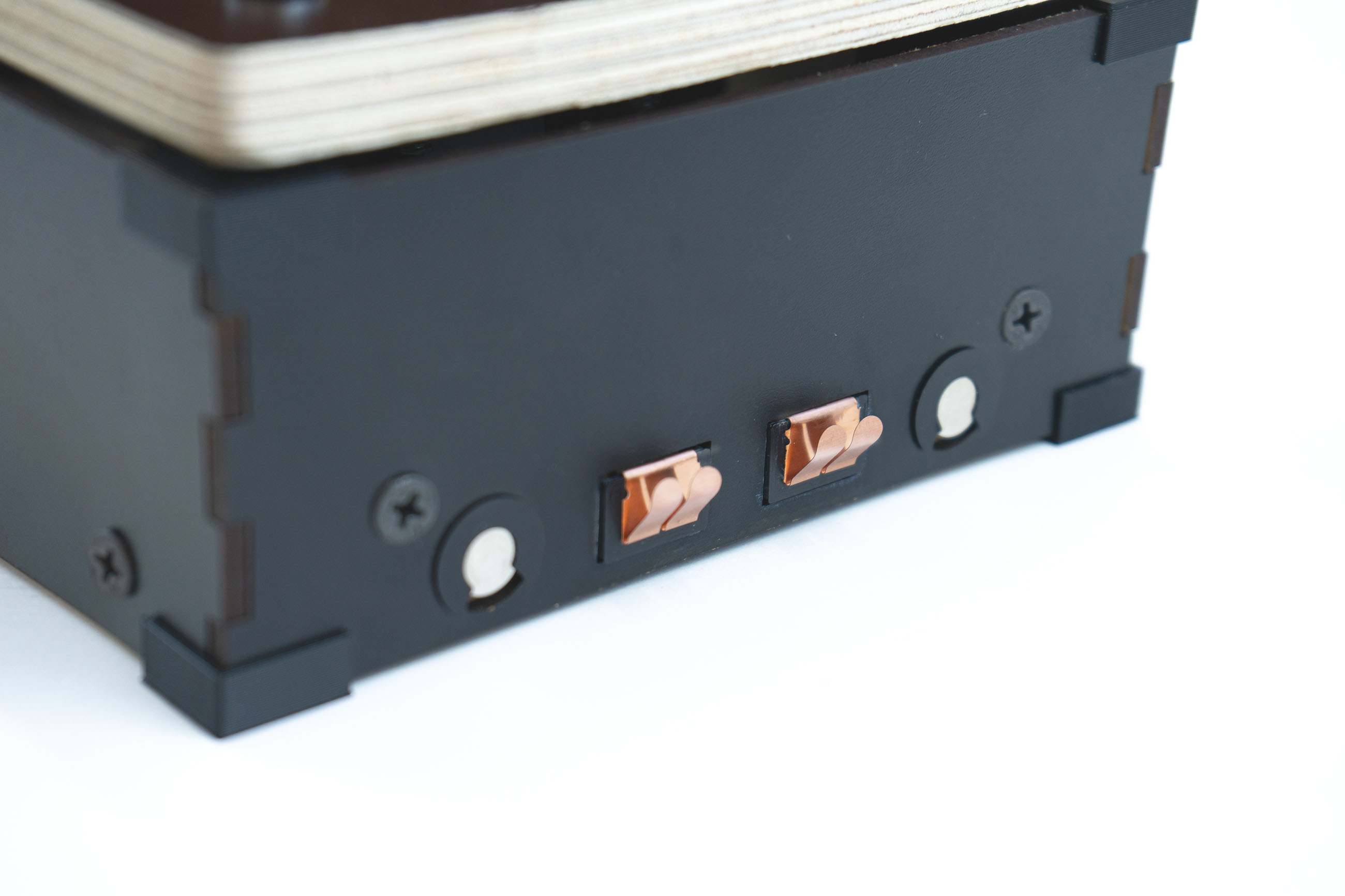
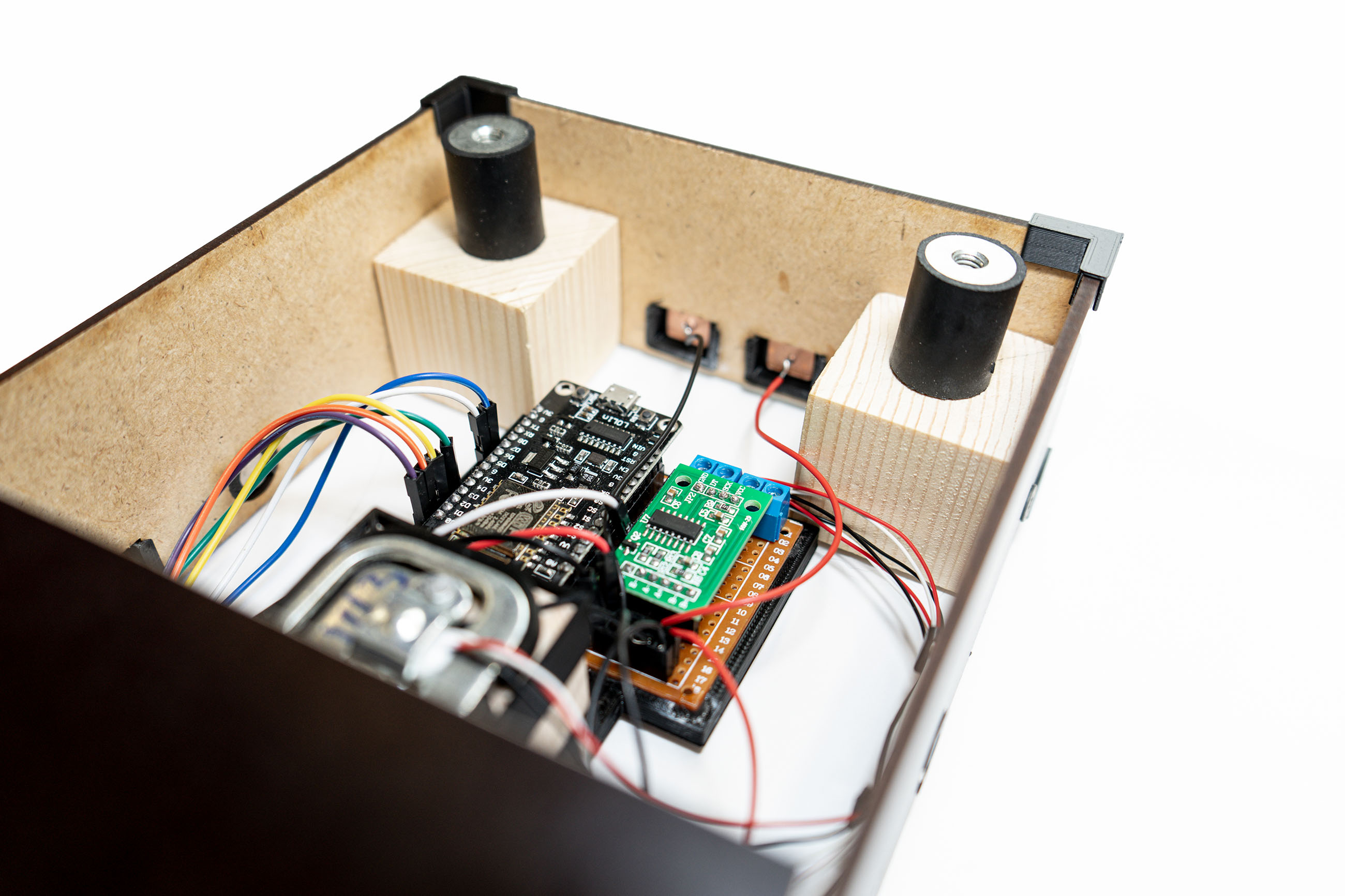
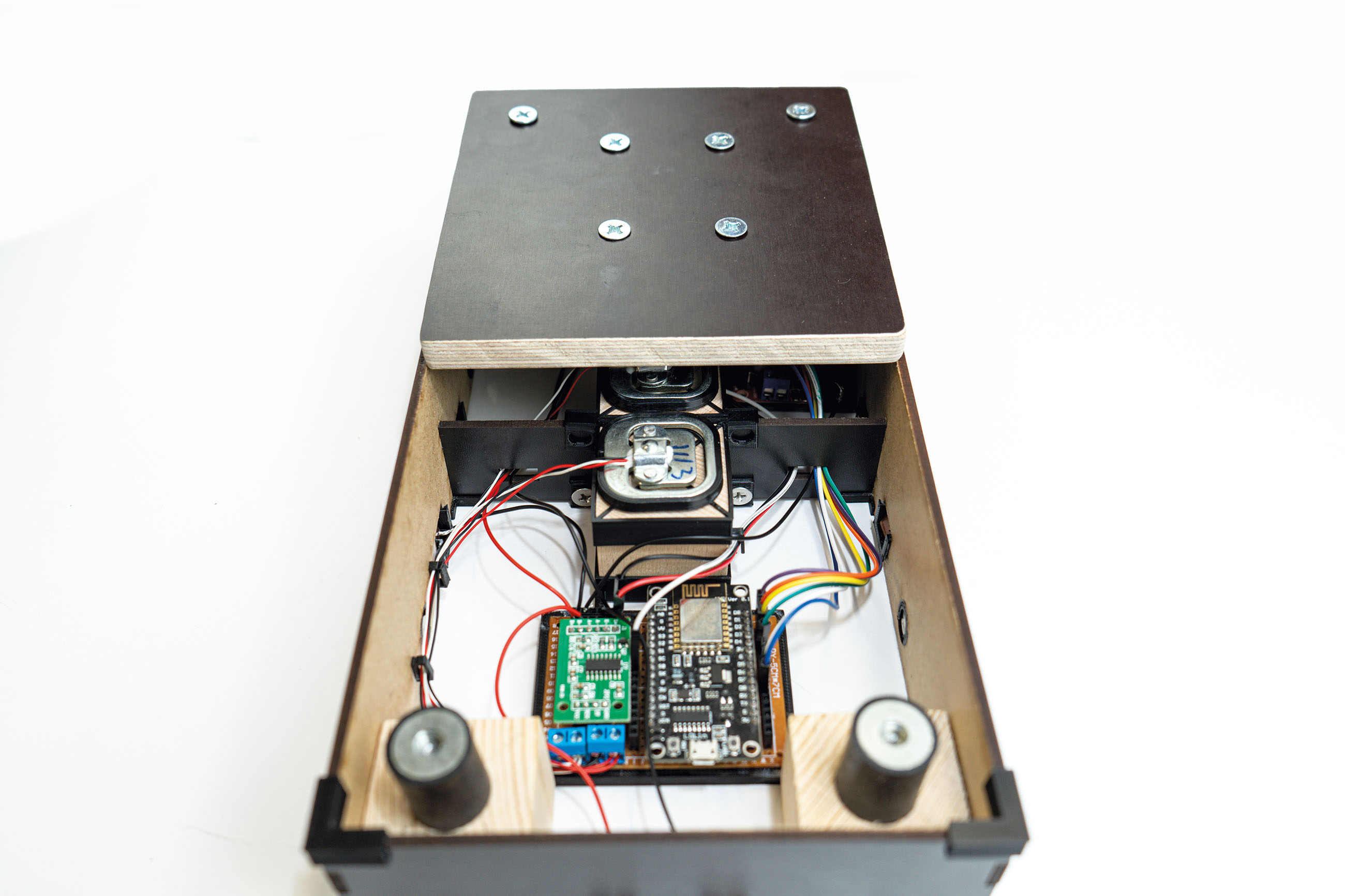
Technical implementation
The concept developed is realised as a prototype on the basis of the findings from the explorations and the scientific principles. The various functions of the system are depicted. It consists of nine individual modular tiles and a control center. The tiles are assembled into a base plate with magnetic connectors and can generate tactile stimuli in 18 separate zones. The system is controlled by central software executed by a computer. It coordinates the individual tiles and enables them to work together.
